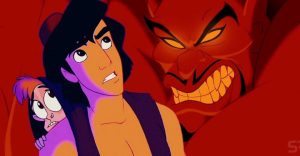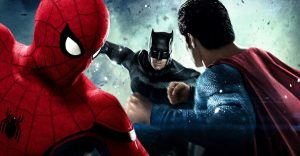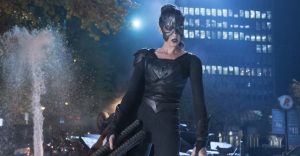Doom Patrol Does Cyborg Better Than The DCEU (So Far)

DC Universe’s Doom Patrol did a far better job of adapting the character of Cyborg than the films of the DC Extended Universe have so far. Ironically, it accomplished this while heavily deviating from the established canon and making Victor Stone part of the Doom Patrol, a team he had never been a part of in the comics.
Created by artist George Perez and writer Marv Wolfman, Cyborg first appeared in DC Comics Presents #26 in August 1980. One of a new generation of young heroes introduced as part of an effort to revitalize the Teen Titans franchise, Victor Stone was a genius with a 170 IQ and an aspiring Olympic athlete, before an accident in the lab of his scientist parents left him on the brink of death. Desperate to save his son after having already lost his wife, Victor’s father, Dr. Silas Stone, conducted a series of experimental replacement surgeries using the cutting-edge cybernetic replacement limbs in his lab, transforming Victor into a cyborg. This origin story was changed in 2011 as part of the New 52 revamp of the DC Comics Universe, with Dr. Silas Stone now healing his son’s injuries by bonding him to a Motherbox; one of the sentient, living computers utilized by the New Gods. This made Cyborg into a more powerful superhero and, in this new reality, one of the founders of the Justice League.
The DCEU films drew heavily upon the The New 52 comics, which many Cyborg fans felt did not do justice to the character as conceived by Wolfman and Perez and placed too much emphasis upon the body-horror elements of Victor Stone’s origin story and his powers. On top of that, Joss Whedon’s heavy Justice League rewrites, reshoots, and cut footage meant the version of Cyborg played by Ray Fisher in Justice League was barely more than a plot-device, who was given little time for introspection or development in the rush from action sequence to action sequence, as opposed to the “heart” of the movie, as described by Snyder.
By contrast, DC Universe’s version of Cyborg in Doom Patrol made a greater effort to explore Victor Stone as a person and the conflicting feelings Victor had regarding the joy he felt helping people as Cyborg compared to the anger he felt at his father treating him more like an experiment than a son. This version of Cyborg, brought to life by Jovian Wade, proved far more relatable to viewers than his DCEU counterpart, in addition to being truer to the character’s original origins.
How The DCEU Failed Cyborg

Most would agree that the 2017 Justice League movie was a deeply flawed film. It could be argued, however, that its biggest mistake lay in how it botched its handling of Cyborg’s character. Victor Stone’s introduction in the theatrical release of Justice League, one of Whedon’s many reshoots, was just under three minutes long and largely limited to establishing that he had been hiding himself from the world in his father’s home after bonding with the alien Motherbox. Even then, a full third of this scene is devoted to Dr. Silas Stone talking with a janitor at STAR Labs, purely to establish the fact that the world at large thinks Victor Stone is dead and that his father has done nothing to correct that belief beyond feebly telling Victor that he can have a life of his own and that he shouldn’t stay around the house brooding.
Ignoring that this interaction is a total reversal from the comics (where Dr. Silas Stone sheltered Victor as a child and strongly disapproved of his going to public school, socializing with people his own age and taking part in scholastic sports) this scene is also utterly ineffective at establishing anything about Victor as a person. All viewers learn is that Victor is worried that his body has become more and more mechanical ever since he was altered by the alien technology and that he is developing new abilities by the day. Even then, Victor seems less concerned about the loss of his humanity and more distressed that what’s happening to him may be the precursor to another alien invasion. This made it difficult for the audience to sympathize with Victor or relate to him.
The Snyder Cut of Justice League is expected to do a far better job of developing Cyborg as an individual than the theatrical release, but Ray Fisher’s Cyborg future in the DCEU is still very much up in the air. The efforts to develop a Cyborg solo film seem to have stalled out and there is now talk of continuing his story in The Flash movie. Additionally, with Cyborg’s origins having already been conveyed by Batman V. Superman: Dawn of Justice and Justice League, there doesn’t seem to be enough material to form the foundation of a solo film. Ultimately, the DCEU is facing the same problem Victor Stone faced in the comics; as great a character as he is, Cyborg was always at his best as part of an ensemble.
Doom Patrol Introduced Cyborg (& Made Him Likable)

When it was announced that Victor Stone would be part of the cast of DC Universe’s Doom Patrol, many fans were confused. Cyborg had never been a part of the Doom Patrol in the comics and it seemed like he would have been a natural choice to star in DC Universe’s first original live-action program, Titans. However, there was an odd sense to the choice, given that all the heroes making up the Doom Patrol were, like Victor, the victims of accidents that gave them superpowers at the cost of their humanity. That thematic resonance, coupled with a story arc that made Victor the heart of the team as he faced his personal traumas, gave birth to a new take on Cyborg that was true to the spirit of the character in the comics yet wholly original and completely relatable.
When we first see Cyborg in Doom Patrol season 1, episode 2, “Donkey Patrol,” he’s saving a woman from being mugged at an ATM in his hometown of Detroit. This scene segues to a park, where Victor grabs something to eat while watching all the other people patronizing the food trucks while scanning the local police band and reading the news feed in his head, looking for opportunities to help people. The scene ends with Victor talking to his father over the phone and Dr. Silas Stone picking apart Victor’s performance as a vigilante, while insisting that he could do better than thwarting simple petty robberies with his powers.
Despite being roughly the same length as the introductory sequence in Justice League, Doom Patrol’s introduction to Cyborg does a far better job of conveying Victor Stone’s character. This was due, in part, to Doom Patrol taking care to show the audience who Victor is and how he reacts to the world rather than having him simply tell the audience his feelings. The fight with the muggers shows that Victor has a sense of humor and while he’s not quite the Booyah-shouting braggart seen in Teen Titans Go! he does still have fun taunting the muggers through an ATM screen. The conversation with his father reveals that Victor is far more concerned with saving lives than the glory and fame that come with being a hero. Finally, the image of Victor sitting on a park table, eating alone while watching the people he’s trying to protect does far more to convey his sense of isolation and fears of losing his humanity than mere words ever could.
In short, Doom Patrol succeeded where the DCEU failed by showing the audience who Victor Stone is rather than telling them. The show also made Cyborg into a more active character, spurring the residence of Doom Manor into action even as he confronted his own insecurities regarding his powers and his father. This proved far more engaging than the brooding, restrained take on Cyborg seen in Justice League, who had to be goaded into heroism by Wonder Woman. Hopefully fans will want to see more of Ray Fisher’s Cyborg after Zack Snyder’s Justice League, but for now, it’s clear why more fans are currently clamoring for the second season of Doom Patrolthan a Cyborg solo film.
About The Author


















